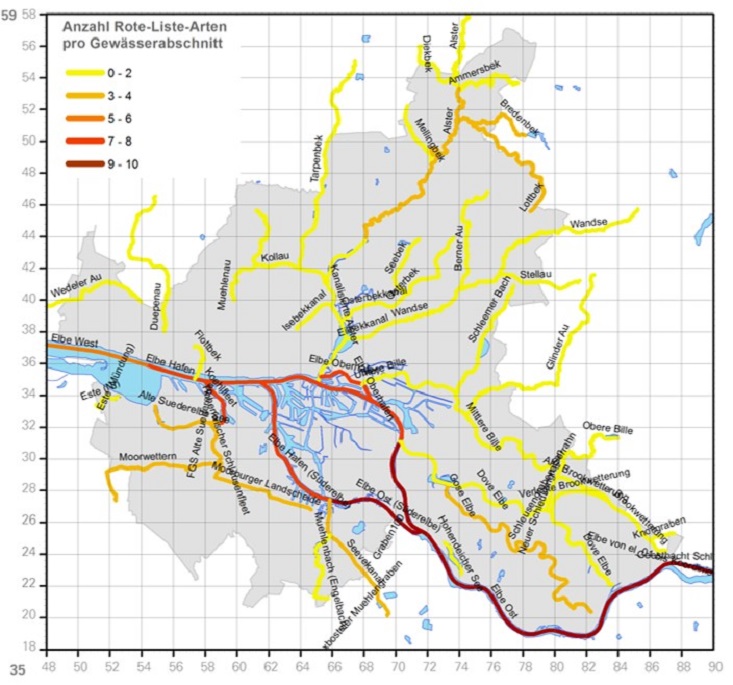Conservation assessments and habitat modelling
Foto: UHH/CeNak, Thiel
In order to assess the conservation status of fish species, for example for the preparation of red lists, standardized methods for conservation assessments are used. Taking into account relevant environmental parameters, we develop mathematical habitat models that can predict probabilities of occurrences of fish species as a function of environmental parameters. Habitat models can be used as decision support aids for nature conservation, fisheries, shipping, hydraulic engineering etc. These decision support aids are urgently needed with regard to the implementation of the Habitats Directive, the EU Water Framework Directive and the Marine Strategy Framework Directive.
Publications
- Thiel, R. & Thiel, R. (2015): Atlas der Fische und Neunaugen Hamburgs. Freie und Hansestadt Hamburg, Behörde für Stadtentwicklung und Umwelt: 170 S.
- Thiel, R., Thiel,R., Eick, D., Heinrichs,J., Lill, D., Oesmann, S.& Weigelt, R. (2017). 5.5 Fische. In: Kleinwächter, M., Schröder, U., Rödiger, S., Hentschel, B. & Anlauf, A. (Hrsg.). Alternative Buhnenformen in der Elbe – hydraulische und ökologische Wirkungen. Konzepte für die nachhaltige Entwicklung einer Flusslandschaft, Band 11. Schweizerbart´sche Verlagsbuchhandlung (Nägele u. Obermiller), Stuttgart: 165-196.
- Thiel, R., Winkler, H.M., Böttcher, U., Dänhardt, A., Fricke, R., George, M., Kloppmann, M., Schaarschmidt, T., Ubl, C., Vorberg, R. (2013): Rote Liste und Gesamtartenliste der etablierten Fische und Neunaugen (Elasmobranchii, Actinopterygii & Petromyzontida) der marinen Gewässer Deutschlands. In: Becker, N.; Haupt, H.; Hofbauer, N.; Ludwig, G. & Nehring, S. (Red.): Rote Liste gefährdeter Tiere, Pflanzen und Pilze Deutschlands, Band 2: Meeresorganismen. – Münster (Landwirtschaftsverlag). – Naturschutz und Biologische Vielfalt 70 (2): 11-76.
- Weigmann, S. & Thiel, R. (2013): Predicting the spatial distribution of blue-spotted maskray Neotrygon kuhlii (Myliobatiformes, Dasyatidae) on the Australian North and Northwest Shelf comparing two different methods of habitat modeling. Journal of Ichthyology 53 (8): 628-640.


